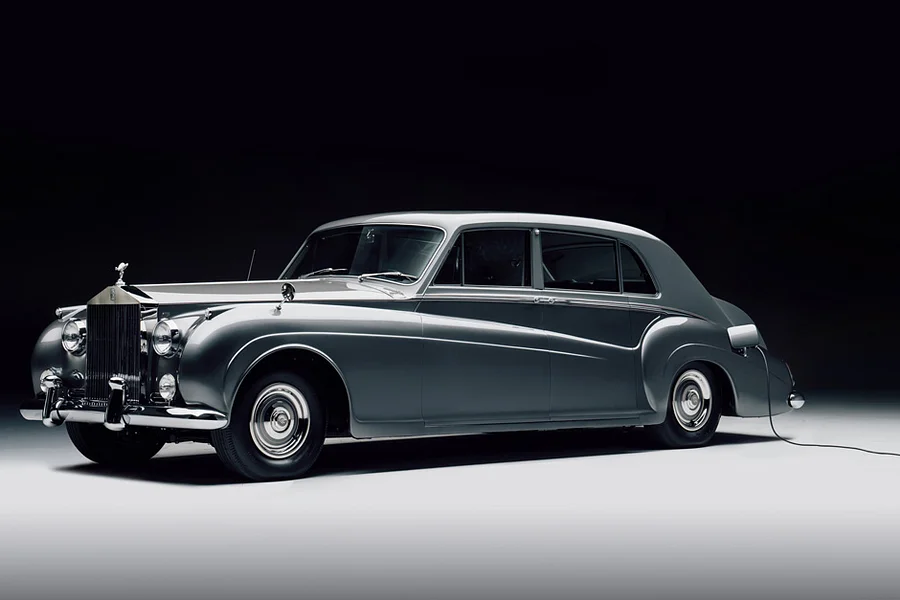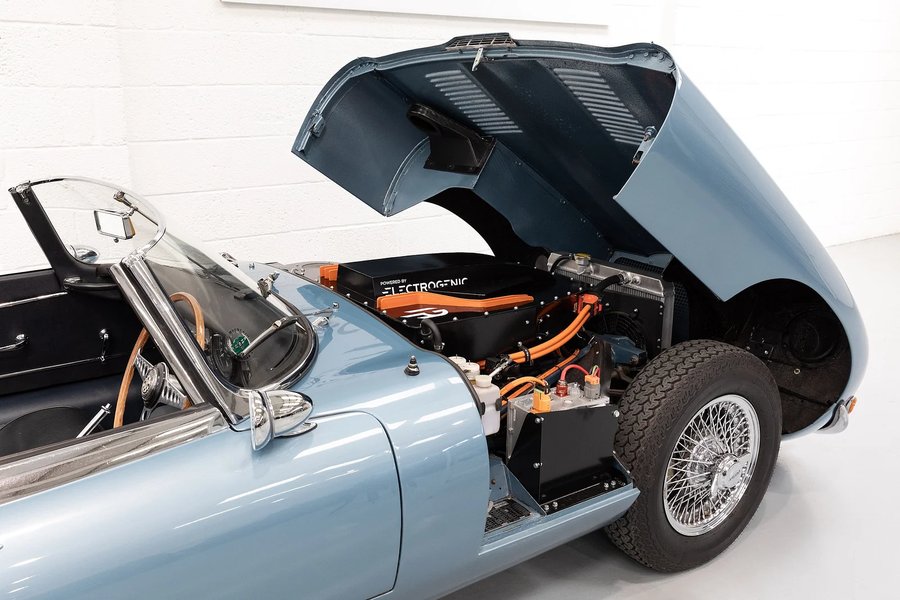It's time to upset some people, but I think there's a time and a place to give classic cars an electric drivetrain. I'm by no means an EV fanatic, but I am an automotive enthusiast who enjoys seeing new technologies emerge and feel that there is a place in this world for EVs, just as I feel like there's a place for hydrogen fuel cells, hydrogen combustion, and synthetic fuel. I extolled this in much greater depth in a technical piece explaining why I'm so supportive of synthetic fuels.
So when is an EV powertrain conversion acceptable?
Am I supportive of electro-modding a classic Ferrari 308 or 1967 Mustang Shelby GT500? Absolutely not. And I despise the current trend of electrifying Porsche 911s with a passion. But if you ask my opinion on doing an electric swap on a Citroen DS or an old Mini, you might be surprised to hear I'm fully OK with the latter. Why?
Was The Engine Crucial To The Experience?
This question is the crux of what it boils down to for me. Cars, particularly of the classic sort, are experiential. They're as much about the sound as they are about the old-timey looks and smell of old leather and cigarette smoke. But we all tend to automatically equate the engine as part of that experience, and in some cases, I don't think this is true.
For some cars, there was so much else at play that the engine was simply a supporting character, providing propulsion only because it needed to meet that one basic requirement of an automobile. For others, the engine could've been something special, but instead, it was so horrible that it detracted from the rest of the experience with terrible power outputs and delivery, a horrible noise, and lackluster performance and reliability.
To illustrate this point, I've chosen a few cars I think are perfectly acceptable candidates for an electric powertrain conversion.
1. Classic Mini

The original Mini was once the definition of a people's car - a mass-market tool to make personal transport affordable and practical for the masses. They ooze character and have been the foundation of dozens of automotive cliches ranging from exceptional visibility to a terrible seating position and, my favorite, go-kart handling. Let's be clear - nothing but a go-kart handles like a go-kart.
OG Minis were famed for many things: their iconic Alec Issigonis-designed styling, the central instrument cluster, the compact footprint, and, yes, their fun handling. But, with the exception of a few specific performance variants, the engine was simply a product of the times, meant to provide adequate propulsion in a relatively fuel-efficient manner.
In the overall context of the experience of driving an old Mini, the engine is a mere whisper, so prevalent is the steering feel, handling dynamics, brakes (or lack thereof), and suspension incapable of absorbing the impact of driving over a penny. In an old Mini, there is so much noise from every stone hitting the undercarriage and clunking over every imperfection in the road that an electric powertrain wouldn't change the overall experience much.
But what about weight? The Mini is a fun little toy that doesn't need to travel 300 miles on a charge or hit 60 mph in under 10 seconds. For these reasons, you only need a small e-motor and battery pairing, giving you 100 miles of range and 122 horsepower - just like the official Mini EV conversion.
2. DMC DeLorean

The DeLorean is famous for many things. It had supercar-aping styling by Giorgetto Giugiaro, gullwing doors, stainless steel bodywork, and it was rear-engined and rear-wheel drive like a Porsche 911, but the actual engine? It was a horrible PRV V6 co-developed by Peugeot, Renault, and Volvo.
Originally slated to feature a rotary engine, this idea was shelved in favor of a Ford Cologne V6. This, too, was abandoned, with the next idea being a turbocharged version of the four-cylinder from the Citroen CX 2000, something Citroen shut down pretty quickly. Eventually, DMC settled for the PRV engine, which produced just 130 hp and 153 lb-ft of torque, and while it was relatively frugal, it was hardly sporty, hitting 60 mph in 10.5 seconds in real-world testing, whereas DMC claimed it could do it in 8.8 seconds.
Basically, the engine was a letdown, and considering the DeLorean was supposed to showcase innovation at every turn, its motor was considered one of the worst elements of the car.
Popularized more by the Back to the Future movie franchise than its own performance as a sports car, an electric powertrain would go some way towards giving the DeLorean the performance it deserved.
3. Citroen DS

If the DeLorean was a proponent of futuristic technologies at the expense of a good engine, the Citroen DS may have been even more so. Because while the DeLorean was intended to be a sports car, the DS was meant to be a showcase of insane technology, championed by the incredible hydraulic system that powered the clutch, suspension, transmission, and more. The self-leveling nature of the hydropneumatic suspension meant you could drive on three wheels if you got a flat while providing the DS with a pillow-soft ride that many modern luxury cars still can't imitate. Simply put, it was a technological tour-de-force. The engine? It was barely a whisper in the conversation.
The DS was so far ahead of its time technologically that one might argue it would've been an EV had the technology been available at the time. It epitomized innovation and forward-thinking, and while some of the systems were short-lived, it was a perfect example of a showcase of human ingenuity.
For a car designed to be as quiet, comfortable, and forward-thinking as possible, the concept of an electric powertrain seems like a perfect fit.
4. Classic Rolls-Royces

If I haven't already upset you, then I might with this idea. Many consider the heart of a Rolls-Royce to be its V8 or V12 engine, but lest we forget, Rolls-Royces were never sports cars - they were meant to be the epitome of luxury vehicles combining effortless power, supreme refinement, and a remarkably insulated ride that negated the noise the V12 might make in any case. Electrification is the perfect fit for a brand like Rolls-Royce, which is why the Rolls-Royce Spectre is such a logical step for the marque.
In fact, the Spectre fulfilled a 120-year-old prophecy, in which Charles Royce said, "The electric car is noiseless and clean. There is no smell or vibration; they should become very useful when charging stations can be arranged. For now, they will not be very serviceable - at least for many years to come."
While I'm not going to jump at the prospect of ripping the heart out of a vintage Rolls-Royce Silver Shadow, in instances where a car is being restored or even restomodded, the engine itself is not something I'd consider integral to the car's experience or ethos.
Other Exceptions
There are more cases like the ones above, and I'm sure, given enough time, I could settle on dozens of cars worthy of a spot on this list. At the end of the day, though, every one of them was a car whose allure never centered around the powertrain or was let down by its engine.
In an era where emissions legislation (especially in places like the UK and Europe) is tightening the noose on even classic car ownership, there are some cases where an EV conversion to prolong the life of a classic car is not a cardinal sin.
Where I may upset some is to suggest that I'd be happy with an e-swap into a Series III Jaguar E-Type V12 - provided it's a restoration project with no engine present - as I never believed the V12 to be the right fit for that car. But in this case, I'd rather find a Jaguar six-cylinder to swap - the brand even produces new old 3.8-liter XKs, win. An E-Type with a straight-six is just right.
Old Range Rovers are another possibility, with engines known for their unreliability and hardly generating much power.
Perhaps the most contentious of all would be the Alfa Romeo Spider, a car with a lackluster four-cylinder that dramatically let down a beautiful sports car. Or what about the VW Type 2 Bus? Sure, its engine permeated the driving experience, but the Bus was about so much more, and given its strong alignment as the hippie vehicle of choice, an eco-friendly conversion seems to fit with its character.
Again, I'm not advocating we voluntarily rip the hearts out of cars for fun, but I believe that there are times when it's acceptable to do so. If the choice is to give an old car an electric lease on life or send it to the crusher, and the engine wasn't an integral part of the experience, then why not electrify it?
Verwandte Nachrichten

